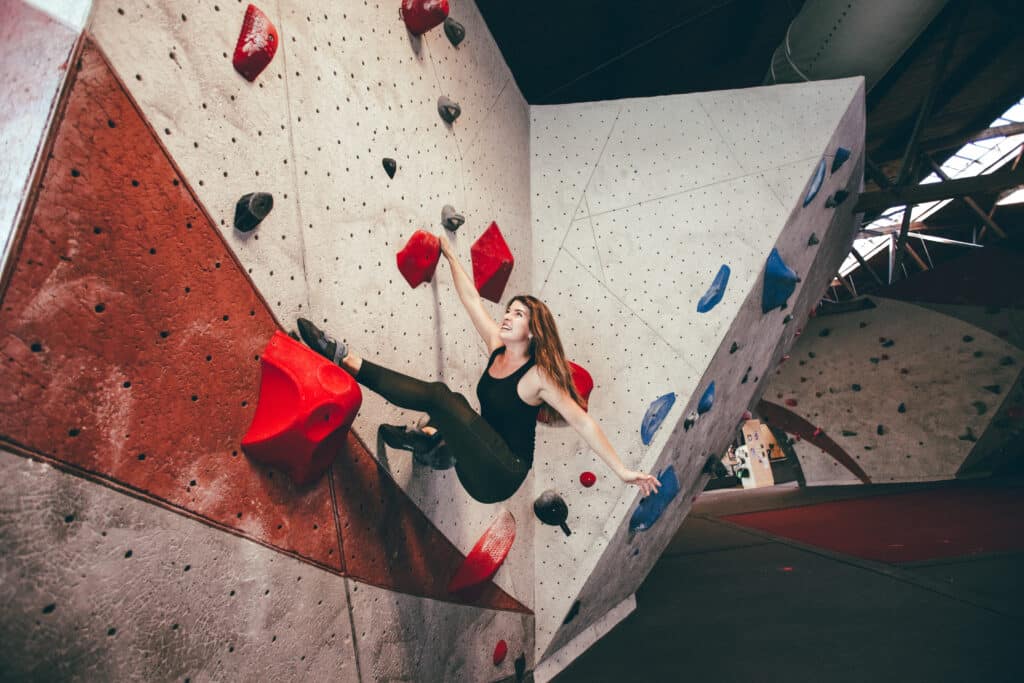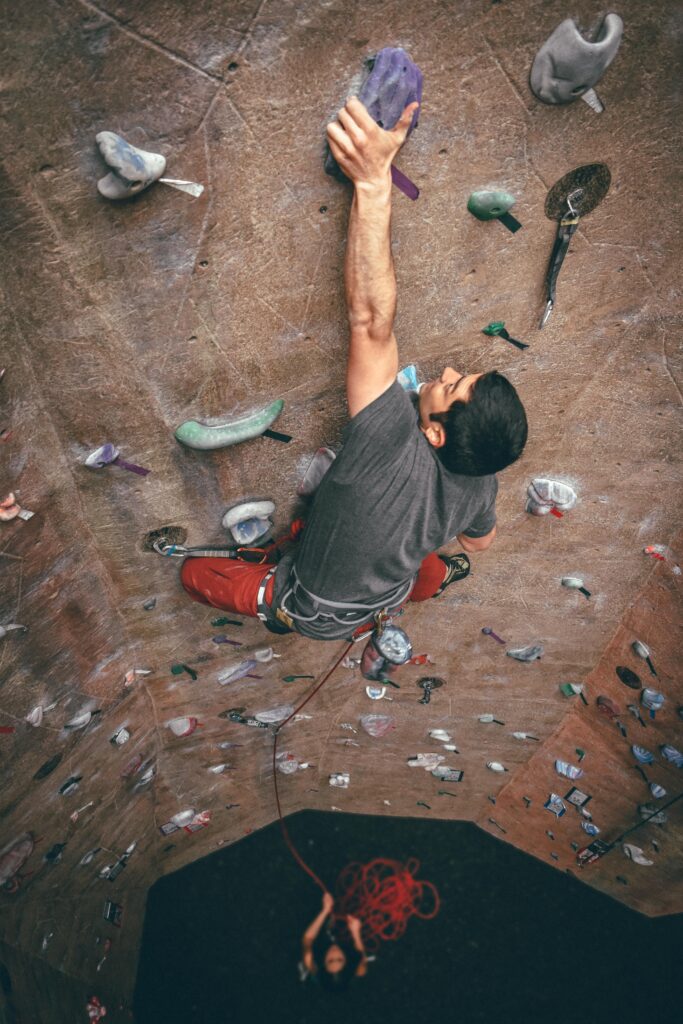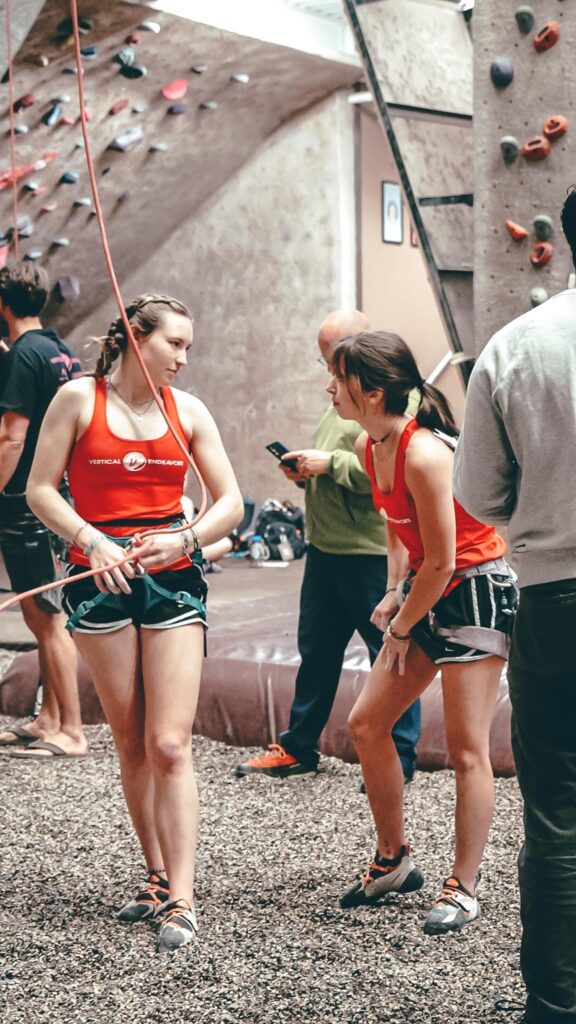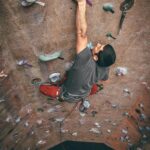Climbing is a Great Full-Body Workout
In recent years, the popularity of climbing as a workout has surged, attracting those who want to stay fit and those who seek some exciting adventures alike. This exhilarating sport not only challenges one’s physical strength and endurance but also tests the body’s flexibility, movement, and resilience. Climbing engages the entire body, providing a comprehensive workout that targets multiple muscle groups simultaneously. Whether you choose to conquer mountains, scale indoor walls, or tackle bouldering challenges, climbing offers a unique and rewarding fitness experience. Let us explore some of the benefits of climbing as a workout and delve into the reasons why it has become a favorite among fitness enthusiasts.

Full-Body Engagement:
Climbing requires the utilization of various muscle groups, making it an excellent full-body workout. The act of climbing engages the upper body muscles, such as the biceps, triceps, shoulders, and back, as climbers reach and pull themselves upward. The lower body is equally involved, with leg muscles like quadriceps, hamstrings, and calf muscles working to provide stability and propulsion. Forearm and hand strength is developed through utilizing various grips. Additionally, climbing activates the core muscles, including the abdominals and obliques, to maintain balance and stability during the ascent. The constant movement and weight-bearing nature of climbing also contribute to the development of muscular endurance and strength.
Cardiovascular Fitness:
Apart from building strength and muscle tone, climbing also offers a great cardiovascular workout. As climbers ascend, their heart rate increases due to the physical exertion and the excitement (fear) that one experiences, this results in improved cardiovascular endurance. The repetitive movements involved in climbing promote the efficient circulation of oxygen and nutrients throughout the body, enhancing overall cardiovascular health. Furthermore, climbing stimulates the body’s metabolism, promoting calorie burn and contributing to weight management.

Functional Strength and Flexibility:
Unlike traditional gym workouts that isolate specific muscle groups, climbing develops functional strength by engaging multiple muscles simultaneously. The dynamic movements required in climbing improve overall strength, power, and coordination. By regularly challenging your body in different positions and angles, climbing promotes flexibility and enhances joint mobility. These functional gains not only benefit climbers during their ascents but also translate into improved performance in various other physical activities and everyday tasks.
Mental Resilience:
Climbing is not just a physical endeavor; it demands mental resilience and focus as well. Overcoming challenging routes, navigating tricky holds, and managing fear, anxiety, and uncertainty all require mental strength. As climbers tackle difficult situations, they develop problem-solving skills, perseverance, and increased self-confidence. The mental aspect of climbing extends beyond the physical workout, making it a great activity for stress relief and mindfulness.

Low-Impact Exercise:
One of the advantages of climbing is that it can be a low-impact exercise, minimizing stress on the joints and reducing the risk of injuries associated with repetitive high-impact activities. The controlled movements and use of climbing equipment, such as ropes and harnesses, provide support and help distribute the load evenly across the body. This makes climbing accessible to people of various fitness levels and ages, offering a safer alternative to other high-impact sports.
Social Engagement:
Climbing is a sport that can be enjoyed individually or as part of a group. Indoor climbing gyms and outdoor climbing areas often foster a strong sense of community among climbers. The shared challenges, encouragement, and camaraderie create a supportive and motivating environment. Additionally, climbing with a partner or in a group can enhance safety during outdoor climbing activities.
Conclusion:
Climbing provides a unique and engaging workout experience that challenges both the body and mind. Its full-body engagement, cardiovascular benefits, functional strength development, and mental resilience make it an excellent choice for those who want to get and stay in great physical shape. Whether you are an outdoor adventurer seeking the thrill of conquering mountains or someone looking for a fun and effective way to stay fit indoors, climbing offers a diverse range of options. However, it is important to approach climbing with proper training, safety precautions, and under the guidance of experienced climbers or instructors to ensure a safe and enjoyable experience. To improve your climbing skills, it is important to incorporate exercises that target strength, flexibility, and endurance. Pull-ups, finger strength training, core exercises, and yoga for flexibility are great places to begin. Additionally, focus on cardio and high-intensity interval training (HIIT) to enhance your endurance. Always prioritize proper warm-up and stretching before your climbing session. Stay hydrated during your workout and practice proper breathing exercises to keep oxygen in your blood, reduce lactic acid build-up, and help you to focus and relax.
Climbing is dangerous, it involves inherent and other risks and cannot be eliminated. The information presented here does not describe all of the risks associated with climbing and is not intended to replace or supersede expert instruction and training.
© 2023 Vertical Endeavors, Inc. All rights reserved. The contents of this article, photographs, and graphical representations are protected by U.S. and International copyright laws. Reproduction and distribution, in part or whole, without written permission from Vertical Endeavors are prohibited. The opinions and information contained in this article are for entertainment and informative purposes. They are those of the author and may not represent those of Vertical Endeavors, and do not necessarily reflect the ideas, ideologies, opinions, or points of view of the organization, affiliates, owners, stockholders, partners, suppliers, licensors or staff. Under no circumstances shall Vertical Endeavors or any entity that are, have been, or will be affiliated be liable for any indirect, incidental, consequential, special, or exemplary damages arising out of or in connection with the information contained in this article.

